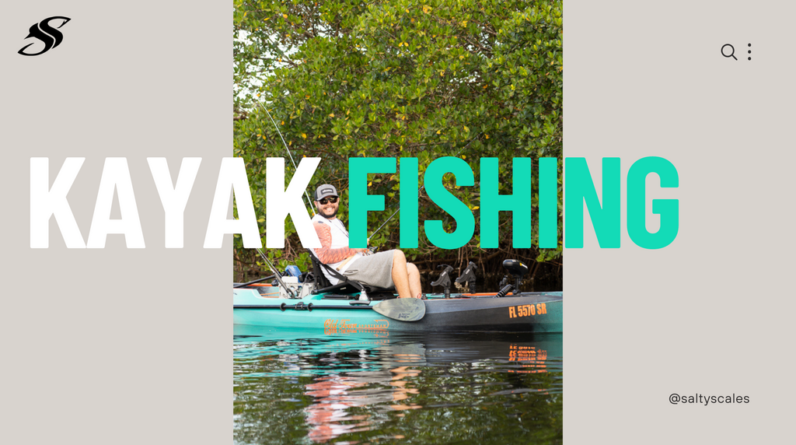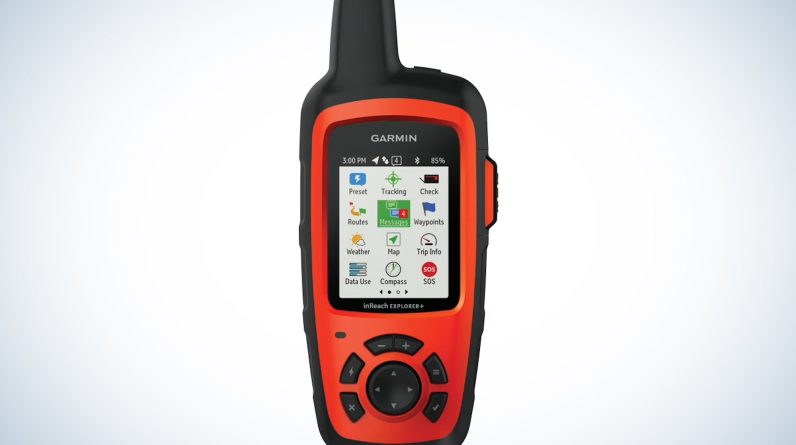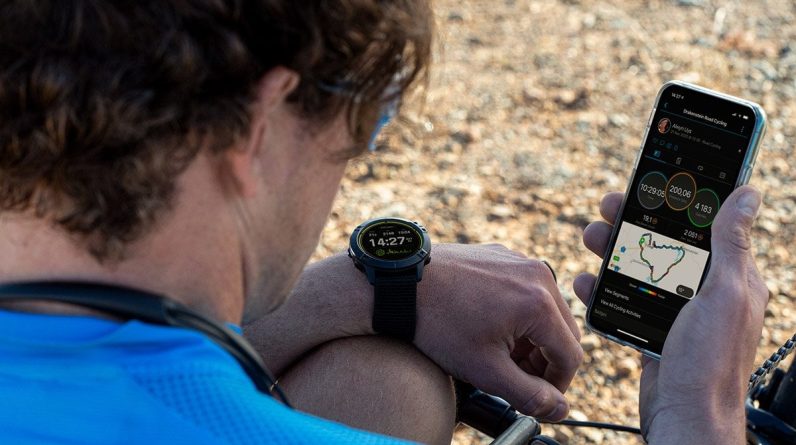
If you haven’t experienced the thrill of paddleboarding in strong currents yet, you’re in for an exhilarating adventure. However, before you dive into the excitement, it’s crucial to familiarize yourself with some essential safety tips. From choosing the right gear to understanding how to navigate the powerful currents, this article will provide you with the top safety measures to ensure a smooth and enjoyable paddleboarding experience. So grab your board, put on your sunscreen, and let’s explore the world of paddleboarding in strong currents together.
Choosing the Right Location
Assessing the Current Strength
When paddleboarding in strong currents, choosing the right location is crucial for ensuring your safety on the water. Start by assessing the current strength of the area you plan to paddle in. Consider factors such as the speed, intensity, and direction of the current. It’s important to match your skill level with the current strength to avoid any unnecessary risks. If you’re a beginner, opting for calmer waters with weaker currents is recommended. On the other hand, experienced paddlers can challenge themselves with stronger currents but should always exercise caution.
Avoiding Areas with Dangerous Rips
Rips are powerful currents that flow out to sea and can be extremely dangerous for paddleboarders. These narrow channels of water moving perpendicular to the shoreline can quickly sweep even the strongest swimmers away from safety. When planning your paddleboarding trip, be sure to avoid areas known for dangerous rips. Research local beaches and consult with experienced paddlers or lifeguards to identify these high-risk areas. Remember, safety should always be your top priority.
Checking Local Tide and Current Charts
Before embarking on your paddleboarding adventure, it’s essential to check local tide and current charts. These charts provide valuable information about the ebb and flow of tidal waters and can help you plan your trip accordingly. Strong currents are often more prevalent during specific tidal phases, so being aware of the current conditions can help you make informed decisions about when and where to paddle. By staying up to date with tide and current charts, you can avoid unexpectedly encountering powerful currents and ensure a safer experience on the water.
Using the Proper Equipment
Selecting a Suitable Board
Using the proper equipment is vital for your safety when paddleboarding in strong currents. Selecting a suitable board is the foundation of a safe and enjoyable paddleboarding experience. Stability is key when dealing with strong currents, so consider choosing a wider and more buoyant board that offers better balance and control. Additionally, a board with a rounded nose and tail can help you maneuver more easily if you encounter waves or choppy conditions. Before heading out, ensure your board is in good condition and that all attachments, such as fins and leash plugs, are securely fastened.
Wearing the Correct Personal Flotation Device
Wearing the correct type of personal flotation device (PFD) is essential for maintaining your safety on the water. Even if you’re a confident swimmer, wearing a PFD can provide an extra layer of protection and buoyancy in case of unexpected circumstances, such as strong currents or fatigue. Choose a PFD specifically designed for paddleboarding or water sports. These PFDs are lightweight, flexible, and allow for freedom of movement. Ensure that your PFD fits properly and snugly, so it won’t come off if you fall into the water.
Using a Leash
Using a leash is a simple yet crucial safety measure that every paddleboarder should follow, especially in strong currents. A leash is an essential piece of equipment that attaches you to your board, preventing it from drifting away if you fall off. In strong currents, having your board close by is vital as it can provide stability and support while you navigate your way back on. When selecting a leash, consider the length and strength. Opt for a leash that is long enough to allow you to move comfortably but not too long to become entangled in underwater obstructions.
Carrying a Whistle or Air Horn
In situations where you need to attract attention quickly or alert nearby boaters or paddlers of your presence, carrying a whistle or air horn is highly recommended. These small and lightweight signaling devices can be a lifeline during emergencies. In strong currents, it’s essential to have a means of drawing attention to yourself in case you find yourself in a precarious situation. Be sure to attach the whistle or air horn securely to your PFD or board, making it easily accessible in case of an emergency.

This image is property of greenwatersports.com.
Preparing for the Paddleboarding Trip
Checking the Weather Forecast
Before embarking on any paddleboarding trip, checking the weather forecast is crucial. Weather conditions can change rapidly, and being caught off guard in strong currents due to unexpected storms or windy conditions can put your safety at risk. Look for forecasts specifically tailored to the area where you plan to paddle, as conditions can vary from one location to another. Keep an eye out for high winds, storms, or any other adverse weather conditions that may affect the currents. Always prioritize safety and postpone your trip if the weather conditions are unfavorable.
Informing Someone About Your Plans
Informing someone about your paddleboarding plans is a responsible and safety-conscious step to take, especially when paddleboarding in strong currents. Share your intended route, approximate time of departure, and expected time of return with a family member, friend, or local authority. In case of an emergency or if you fail to return, this information will be helpful for search and rescue operations. Additionally, consider using tracking apps or devices that allow your loved ones to monitor your progress in real-time, providing an added layer of safety and peace of mind.
Bringing a Cell Phone in a Waterproof Case
Carrying a cell phone in a waterproof case is another essential safety measure when paddleboarding in strong currents. In case of an emergency or if you need to call for assistance, having a cell phone accessible can be a game-changer. Ensure your phone is in a waterproof case that provides adequate protection against water damage. This way, even if you accidentally drop your phone in the water, it will remain functional. Remember to have emergency numbers saved in your phone and keep it easily accessible, either in a pocket or attached to your PFD.
Improving Your Paddleboarding Skills
Practicing Good Balance and Stance
Improving your balance and stance is key to effectively paddleboarding in strong currents. Maintaining a good balance on your board will help you stay stable and avoid falling off in challenging conditions. Practice keeping your feet parallel and hip-distance apart, with your knees slightly bent for better stability. Distribute your weight evenly on the board and engage your core muscles to maintain a solid base. Regularly practicing good balance and stance on calm waters will enhance your stability and confidence when faced with stronger currents.
Learning Different Paddle Techniques
Learning different paddle techniques is essential for navigating through strong currents efficiently and confidently. One technique to master is the high-angled paddle stroke, which involves inserting the paddle blade fully into the water and using your torso and core muscles to generate power. This technique enables you to paddle with more force, making it easier to progress against the current. Another useful technique is the sweep stroke, which allows you to turn quickly and maneuver around obstacles. Taking the time to learn and practice different paddle techniques will greatly enhance your paddleboarding skills in strong currents.
Taking a Paddleboarding Lesson
If you’re new to paddleboarding or want to improve your skills, taking a paddleboarding lesson can provide valuable knowledge and guidance. Instructors can teach you proper techniques, help you develop good habits, and provide safety tips specific to strong currents. They can also give you hands-on feedback and guidance to ensure you’re using the correct form and posture while paddleboarding. Taking a lesson from a certified instructor will not only enhance your skills but also give you the confidence to tackle more challenging conditions, including paddling in strong currents.
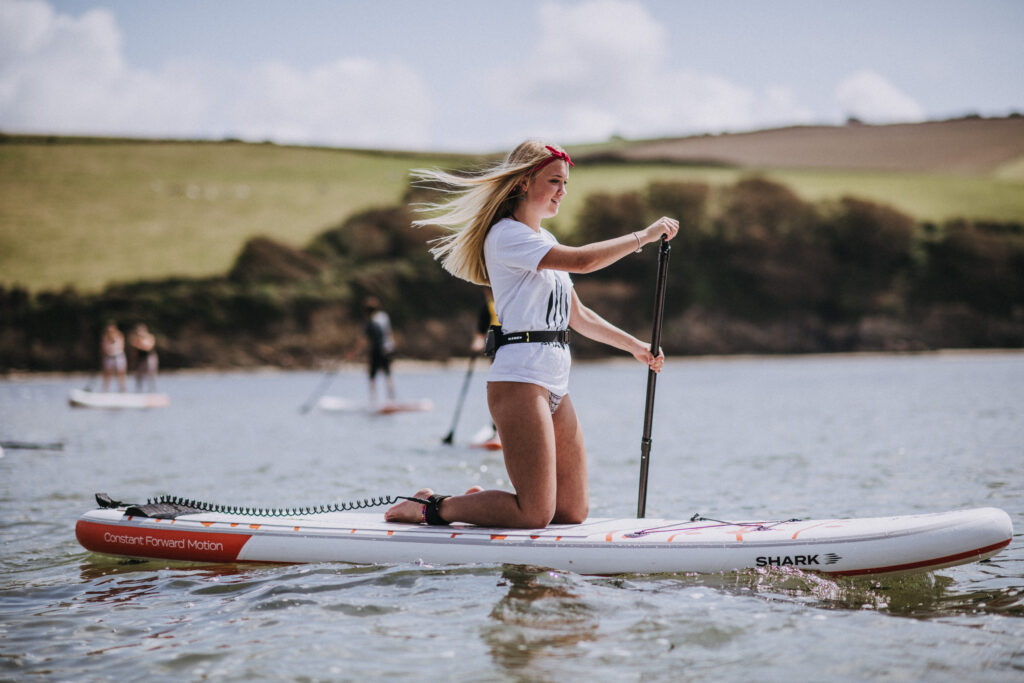
This image is property of www.sharksups.com.
Staying Aware of Current Conditions
Observing the Current Direction
When paddleboarding in strong currents, it’s essential to stay aware of the current direction at all times. Understanding the flow of the current will help you plan your movements and choose the most efficient route. Take a moment to observe the movement of the water, such as the direction in which it’s flowing and any noticeable patterns. This awareness will allow you to paddle smarter, utilizing the energy of the current to your advantage. Always remember to stay vigilant and adjust your course as needed to maintain control and safety.
Avoiding Obstacles and Hazards
Navigating your way through strong currents requires constant vigilance to avoid obstacles and hazards. Keep an eye out for potential hazards, such as submerged rocks, piers, or other watercraft. Strategically plan your route and steer clear of areas with higher risk. Be mindful of any sudden changes in water depth or the presence of strong eddies that can destabilize your board. By staying aware of your surroundings and avoiding potential hazards, you can minimize the chances of accidents or collisions, ensuring a safer paddleboarding experience.
Being Alert to Changes in the Current
Strong currents can be unpredictable, so it’s crucial to stay alert to any changes in the current conditions. Keep an eye out for alterations in the water patterns, such as sudden changes in speed or direction. These changes may indicate the presence of rip currents, strong eddies, or turbulent areas. If you notice any significant changes, reassess the situation and consider adjusting your route or exiting the water if necessary. Maintaining a high level of awareness will help you respond effectively and make informed decisions in the face of changing current conditions.
Reading the Water and Understanding Currents
Identifying Eddies and Upwellings
To navigate strong currents safely, it’s important to develop the ability to identify eddies and upwellings. Eddies are circular water movements caused by obstructions, such as rocks or bends in the river, and can create whirlpools. They often form areas of slower-moving water where you can find temporary respite from the main current. Upwellings, on the other hand, occur when currents interact with underwater features and bring colder water to the surface. These areas might indicate the presence of a stronger current below the surface. By recognizing eddies and upwellings, you can adjust your paddling strategy accordingly and maneuver through strong currents more effectively.
Recognizing Wave Patterns
Being able to recognize wave patterns is crucial for understanding the behavior of currents. Waves can provide valuable information about the intensity and direction of the current. Paddleboarding through or against waves requires adjusting your technique to maintain stability and control. Understanding how waves interact with strong currents can also help you anticipate any changes in the current’s behavior. By studying the patterns and behavior of waves, you can better predict how the current will affect your paddling and navigate through strong currents with more confidence.
Understanding Rip Currents
Rip currents are powerful and fast-moving currents that flow offshore. They pose a significant hazard to paddleboarders and can pull even the strongest swimmers away from shore. Knowing how to recognize and understand the behavior of rip currents is crucial for your safety. Look for signs such as discolored water, foamy channels, or gaps in the breaking waves. If you find yourself unexpectedly caught in a rip current, it’s essential to remain calm, conserve your energy, and paddle parallel to the shore until you’re out of its grip. Understanding rip currents can help you avoid them or respond effectively if caught in one.
Knowing the Effects of Navigation Aids
Navigation aids, such as buoys and markers, can offer valuable insights into the current conditions. These aids are often strategically placed to guide watercraft and indicate safe passages. However, they can also provide useful information for paddleboarders. Pay attention to the effects of navigation aids on the water, as they can indicate areas of stronger or more turbulent currents. Understanding how navigation aids affect the currents can help you make informed decisions about your route and ensure a safer paddleboarding experience in strong currents.
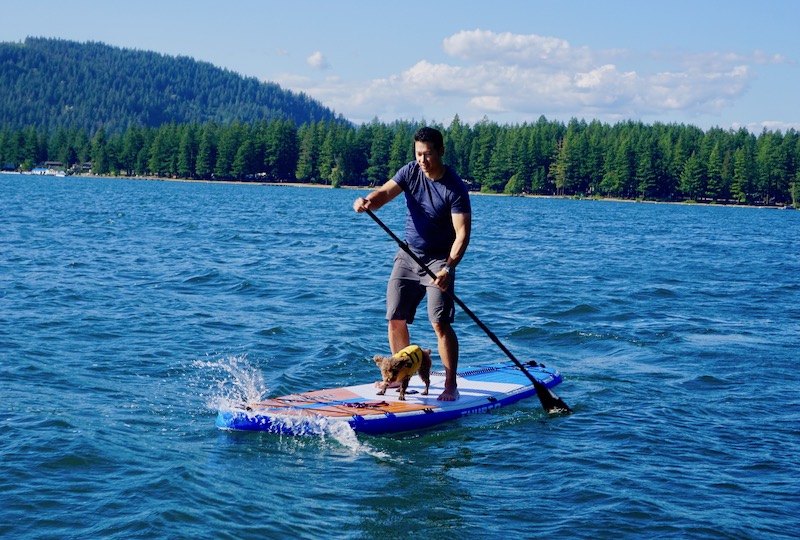
This image is property of isupworld.com.
Getting Out of a Strong Current
Paddle Parallel to the Current
If you find yourself caught in a strong current, one of the most effective techniques to get out of it is to paddle parallel to the current. Paddling parallel to the current allows you to make progress towards calmer waters while avoiding struggling against the full force of the current. Begin by identifying the direction of the current, then adjust your course by paddling diagonally away from it. As you make progress parallel to the current, gradually turn towards the shore or an area with weaker currents. Paddling parallel to the current can save your energy and help you reach safety more efficiently.
Use Angled Approach to Reach Calmer Waters
Another technique to employ when trying to get out of a strong current is to use an angled approach to reach calmer waters. This technique involves utilizing the assistance of eddies or areas of weaker currents to navigate your way out. Observe the water for signs of eddies or areas with a slower current, and then use their flow to your advantage. Paddle towards the edges of these areas, angling towards the direction of less resistance. By using an angled approach, you can strategically navigate through strong currents, conserving energy and making progress towards calmer waters.
Avoid Struggling Against the Current
When facing a strong current, it’s essential to avoid struggling against it. Trying to paddle directly against a strong current is not only physically demanding but can also be unsafe. Fighting against a powerful current can exhaust you quickly and potentially put you at risk of losing control or getting swept away. Instead, focus on navigating your way out safely by using the techniques mentioned earlier. Remember that safety is paramount, and being patient and strategic is crucial when dealing with strong currents. Avoid struggling against the current and prioritize finding a route that will allow you to reach calmer waters.
Rescuing Techniques in Strong Currents
Knowing How to Perform a Self-Rescue
In the event that you find yourself in need of a rescue while paddleboarding in strong currents, knowing how to perform a self-rescue is of utmost importance. Practice self-rescue techniques before heading out into challenging conditions to ensure that you’re proficient in executing them if necessary. One common self-rescue technique is the “climbing” or “lift and slide” method. This involves using your board as a floating platform and gradually climbing back onto it from the side. It’s vital to remain calm, conserve your energy, and methodically perform the self-rescue steps to ensure a successful return to your board.
Assisting Others in Need
Being able to assist others in need is a responsibility that all paddleboarders should be prepared for, especially in strong currents. If you encounter someone struggling or in distress, maintain your own safety first. Assess the situation and communicate with the person to understand their needs and abilities. If possible, offer assistance by extending a paddle or providing guidance on how to exit the current safely. Depending on the severity of the situation, it may be necessary to call for professional help or alert nearby authorities. Remember, helping others should never compromise your own safety.
Using Rescue Tools and Techniques
In addition to knowing self-rescue techniques, understanding how to use rescue tools and techniques can be vital in strong currents. Carry a throw bag with a buoyant rope that can be thrown to someone in need of assistance. This can provide them with the means to hold onto something while help arrives. Practice your throwing technique to ensure accuracy and distance. Additionally, familiarize yourself with rescue techniques such as towing a person back to shore or using rescue boards or tubes to support someone in the water. Knowing how to utilize rescue tools and techniques can make a significant difference in emergency situations.
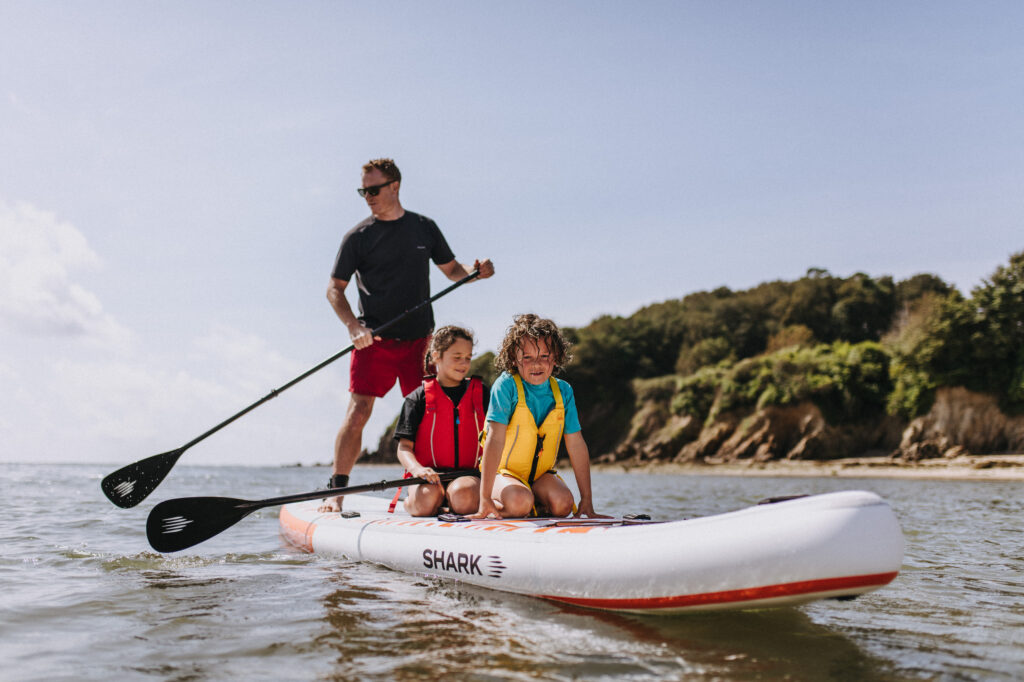
This image is property of www.sharksups.com.
Knowing Your Limits and Taking Breaks
Being Aware of Physical and Mental Exhaustion
Paddleboarding in strong currents requires physical strength and mental focus. It’s crucial to be aware of your limits and recognize signs of physical and mental exhaustion. Paddling against a powerful current can be physically demanding, and fatigue can compromise your ability to make informed decisions and react quickly. Pay attention to your energy levels and any signs of muscle fatigue or mental strain. If you start to feel exhausted, it’s essential to take a break, rest, and hydrate before continuing. Knowing your limits and listening to your body will help you maintain a safe and enjoyable paddleboarding experience.
Taking Frequent Rests and Hydrating
Taking frequent rests and hydrating is essential when paddleboarding in strong currents. Paddling against a powerful current can be physically demanding and result in increased fluid loss through sweat. To prevent dehydration and replenish your energy levels, take regular breaks during your paddleboarding trip. Find a secure and calm spot to rest, rehydrate, and refuel with snacks. Be sure to drink plenty of water or sports drinks to stay hydrated and maintain your strength. Prioritize self-care by listening to your body’s needs and allowing yourself enough time to rest and recover during your paddleboarding adventure.
Continuing Education and Training
Attending Paddleboarding Courses or Workshops
Continuing education and training are essential for enhancing your paddleboarding skills and knowledge, particularly when it comes to paddleboarding in strong currents. Consider attending paddleboarding courses or workshops specifically designed to address the challenges of paddling in stronger currents. These courses provide valuable insights, expert guidance, and hands-on practice in a controlled environment. Experienced instructors can share their expertise and teach you advanced techniques, increasing your confidence and safety when facing strong currents. By investing in continuing education, you can continually improve your skills and stay up to date with the latest safety guidelines and updates.
Keeping Current with Safety Guidelines and Updates
Staying informed and up to date with safety guidelines and updates is a responsibility every paddleboarder should take seriously. Strong currents can be unpredictable, and safety guidelines and regulations can change over time. Monitor reliable sources such as Coast Guard advisories, local water safety organizations, or paddleboarding associations for any updates related to paddleboarding safety. Familiarize yourself with the specific regulations and requirements for the areas where you paddle and ensure you comply with any safety recommendations. Continuously staying informed and adapting your practices to current guidelines will help you maintain a safe and enjoyable paddleboarding experience throughout your journey.
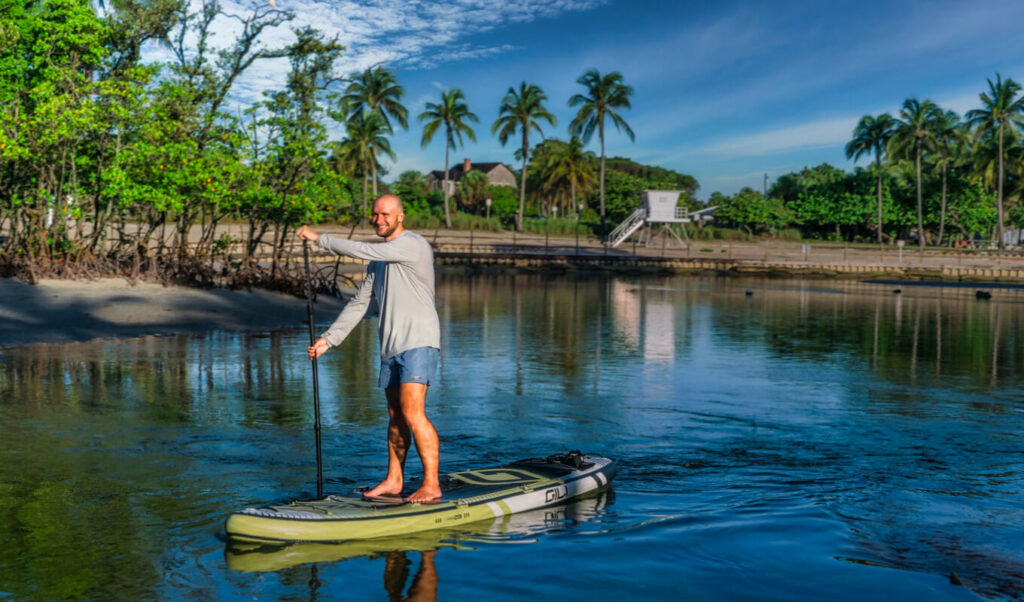
This image is property of cdn.shopify.com.


